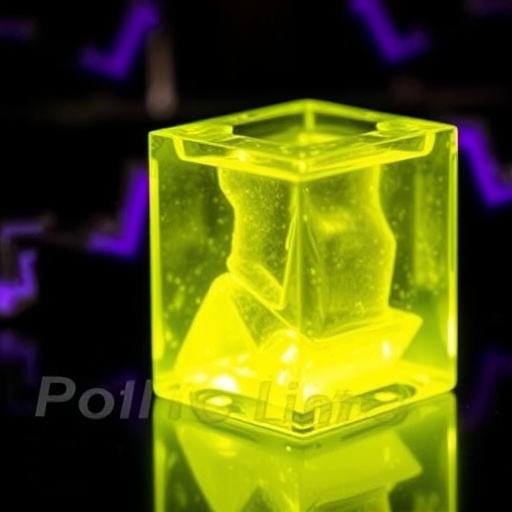Researchers have been continuously pushing the boundaries of solid-state electrolytes for energy storage applications, particularly in lithium-ion batteries. A noteworthy contribution to this field comes from a recent study by Nasib, Islam, Firouzi, and their collaborators, which investigates the incorporation of cellulose acetate in polyvinylidene fluoride-co-hexafluoropropylene (PVDF-HFP) solid-state electrolytes. Their findings, published in the prestigious journal Ionics, shed light on the significant effect of cellulose acetate on the electrochemical performance of these materials, positioning them as a focal point for future research and development.
Cellulose acetate is a biopolymer derived from cellulose, known for its biodegradability, excellent film-forming capabilities, and high mechanical strength. These properties make it an attractive candidate for utilization in solid-state electrolytes, which require not only good ionic conductivity but also adequate mechanical stability during operation. The research team aimed to evaluate how varying concentrations of cellulose acetate could influence the ionic conductivity, thermal stability, and overall electrochemical performance of their PVDF-HFP-based system.
In their experiments, the researchers synthesized a series of solid-state electrolytes by varying the cellulose acetate content from zero to a set maximum concentration. Through a series of electrochemical measurements, including impedance spectroscopy and cyclic voltammetry, the team systematically studied how the addition of cellulose acetate affected the ionic dissociation and mobility within the electrolyte matrix. The results were particularly revealing, highlighting improvements in ionic conductivity with specific cellulose acetate concentrations.
One of the most compelling findings of this study is that there exists an optimal range for cellulose acetate inclusion. Too little cellulose does not sufficiently enhance the electrolyte’s performance, while excessive amounts can disrupt the polymeric network, leading to a reduction in ionic conductivity. These findings underscore the importance of material optimization in achieving desirable electrochemical properties in solid-state electrolytes.
Moreover, the thermal stability of the PVDF-HFP/cellulose acetate composites was evaluated using techniques such as thermogravimetric analysis (TGA). The results indicated that the inclusion of cellulose acetate not only maintained the thermal stability of the solid-state electrolyte but also provided an additional barrier against thermal degradation, ensuring safer operations under varying temperature conditions. This property is particularly significant for applications in electric vehicles and energy storage systems, where thermal management is critical.
Fundamentally, the incorporation of cellulose acetate may enhance the interaction between the PVDF-HFP matrix and lithium ions, leading to improved transport mechanisms and overall enhanced performance. The researchers posited that this enhancement could be attributed to the presence of hydroxyl groups in cellulose acetate, which may assist in ion solvation and facilitate their migration through the polymer network. Such insights open a new pathway for manipulating polymer structures to achieve superior electrochemical properties.
Another striking aspect of this study is its alignment with the global push for sustainable materials in battery technology. By utilizing a biopolymer like cellulose acetate, the researchers are not only working towards improved electrochemical performance but are also advocating for environmentally friendly solutions in the energy sector. The trend towards using renewable resources in materials science cannot be overlooked, as it signifies a shift that aligns with broader sustainability goals.
As energy demands escalate, developing efficient solid-state electrolytes that overcome the limitations of conventional liquid electrolytes becomes increasingly crucial. Liquid electrolytes, while effective in traditional lithium-ion batteries, pose several risks, including leakage and volatility. The adoption of solid-state electrolytes presents a safer alternative, and studies like this one contribute significantly to the ongoing research to optimize these materials.
Beyond the immediate findings, this research opens the door to further explorations into hybrid polymer systems, combining cellulose acetate with other biopolymers or additives to potentially enhance their electrochemical characteristics even further. Scientists are encouraged to investigate multidisciplinary approaches that could lead to innovative and groundbreaking materials capable of revolutionizing energy storage technologies.
The practical implications of this research are likely to be significant. As the automotive industry continues its shift toward electric vehicles, solid-state batteries are considered the future of energy storage. The composition of these batteries could dictate not only their efficiency but also their safety and longevity. Should the findings from this research be translated into commercial applications, consumers may eventually benefit from batteries that are not only more efficient but also more environmentally friendly.
In summary, the groundbreaking work of Nasib, Islam, and Firouzi explores the interplay between cellulose acetate and PVDF-HFP in solid-state electrolytes, revealing enhanced electrochemical performance through careful optimization. Their findings hold promising potential for the future of energy storage systems and align well with global sustainability efforts. The next steps will undoubtedly involve further research aimed at delving deeper into the underlying mechanisms at play and potentially paving the way for commercial applications that could soon enter the market.
In conclusion, as we stand on the brink of a technological shift in how we store and utilize energy, research such as this serves as a critical pillar in developing materials that can meet the demands of tomorrow’s energy landscape. By enhancing our understanding of polymer blends and their electrochemical behaviors, researchers are contributing to a future where energy storage solutions are efficient, safe, and compliant with eco-friendly standards.
Subject of Research: Solid-state electrolytes for lithium-ion batteries
Article Title: Effects of cellulose acetate on electrochemical performance in poly vinylidene fluoride-co-hexafluoropropylene solid-state electrolytes
Article References:
Nasib, I., Islam, M.R., Firouzi, M. et al. Effects of cellulose acetate on electrochemical performance in poly vinylidene fluoride-co-hexafluoropropylene solid-state electrolytes. Ionics (2025). https://doi.org/10.1007/s11581-025-06539-z
Image Credits: AI Generated
DOI: https://doi.org/10.1007/s11581-025-06539-z
Keywords: Solid-state electrolytes, cellulose acetate, polyvinylidene fluoride, electrochemical performance, energy storage, lithium-ion batteries, sustainability, polymer chemistry.




